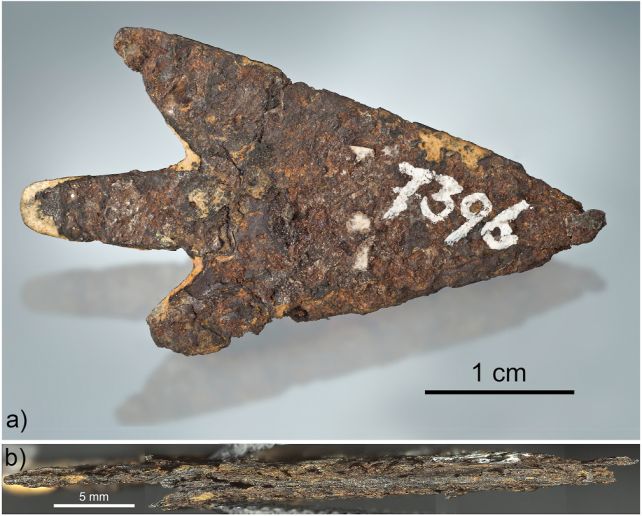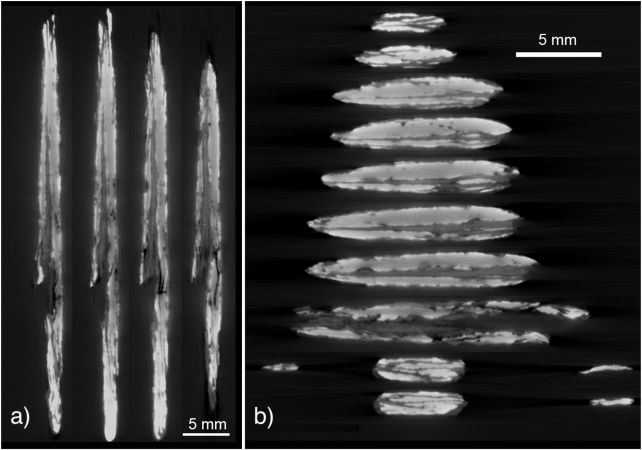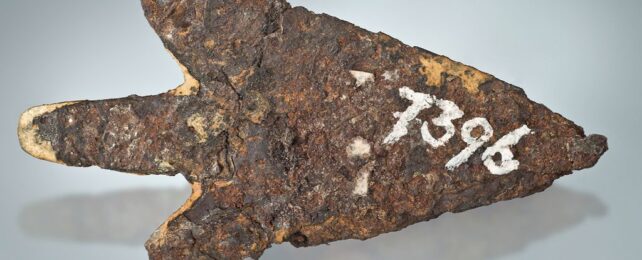A Bronze Age arrowhead excavated in Switzerland in the 19th century turns out to be made from an unexpected material.
The tiny artifact is made from iron retrieved from an object that fell from the sky. But there's a twist. It wasn't even the closest meteorite to the settlement at the time. Rather, a team of scientists thinks that it could have come from as far away as Estonia.
So the arrowhead is not just a record of the use of sky iron, in the time before ore smelting, but of extensive trade networks that must have existed thousands of years ago.
The object was identified in a concerted search for ancient meteoritic iron artifacts led by geologist Beda Hofmann of the Natural History Museum of Bern and the University of Bern in Switzerland. Pure iron was scarce in prehistoric times, but our ancestors availed themselves of the most accessible resource: iron that fell from the sky, in the form of meteorites.
Iron meteorites are the most commonly found, since they are better able to withstand the stress of atmospheric entry. They generally consist of iron, with small amounts of nickel and trace amounts of other metals mixed in. It's thought that almost all Bronze Age iron tools and weapons were made with meteoritic iron.

Most of these artifacts have been found across the Middle East, Egypt, and Asia; but relatively few across the vast expanse of Europe.
The settlement of Mörigen in what is now Switzerland represented an excellent place to look. It thrived during the Bronze Age, around 800 to 900 BCE, and was just a short distance (no more than 8 kilometers, or 5 miles) from the Twannberg field strewn with fragments of meteoritic iron from a rock that fell from the sky many thousands of years ago, before the last ice age.
Sure enough, among the objects previously excavated from the site, Hofmann and his colleagues found a single iron arrowhead. It measures 39.3 millimeters in length (1.5 inches), and weighs just 2.904 grams (0.102 ounces). It has traces of organic residue, which the researchers think is probably birch tar used to adhere the arrowhead to a shaft. And its composition is out of this world.
The object displays the characteristic iron and nickel composition expected of meteoritic iron, as well as the smoking gun – a radioactive isotope of aluminum, aluminum-26, that only forms out there, among the stars.

But here's where it gets really interesting. The specific mix of metals found in the arrowhead do not match the meteoritic iron found in the Twannberg field. Rather, it seems to belong to a specific class of iron meteorite known as IAB meteorites.
Luckily, this makes its provenance a little easier to pin down. Of all the large IAB meteorites known to have fallen in Europe, three have a composition that matches the arrowhead: Bohumilitz, from Czechia; Retuerte de Bullaque, from Spain; and Kaalijarv, from Estonia.
Of these, the researchers surmised, the best match is probably Kaalijarv. It fell to Earth in around 1500 BCE, and spread many fragments suitable for reshaping into small sharp things like arrowheads. But its distance lay around 1,600 kilometers (994 miles) from Mörigen. This suggests that it traveled, perhaps via the same trade routes as Baltic amber.
Given the large number of meteorite shrapnel produced by the Kaalijarv impacts, it would be worth looking amongst collections for objects similar to the arrowhead, to see if the parent meteorite can be identified.
"Whether or not derived from Kaalijarv, the arrowhead most likely was not a singular object and likely other worked fragments of meteoritic iron, including samples of relatively small size, are present in archaeological collections in Europe and possibly even at larger distance," the researchers write.
The discovery has been published in the Journal of Archaeological Science.
